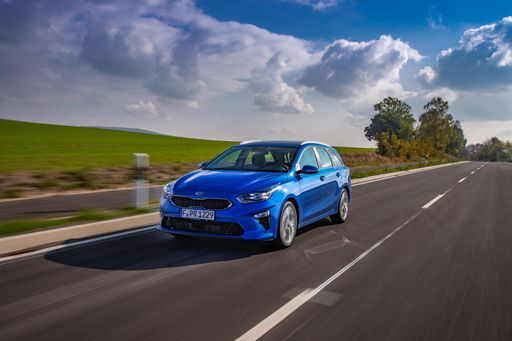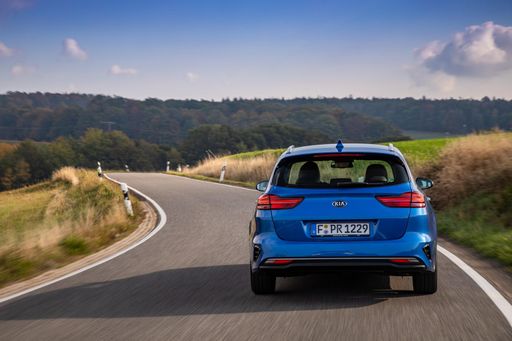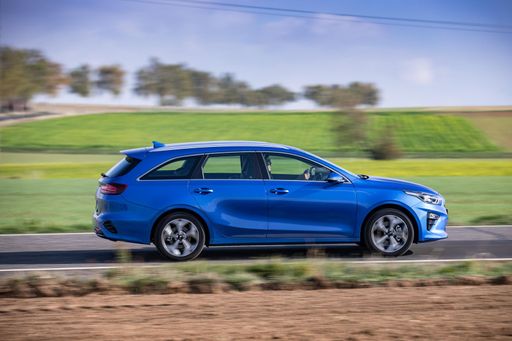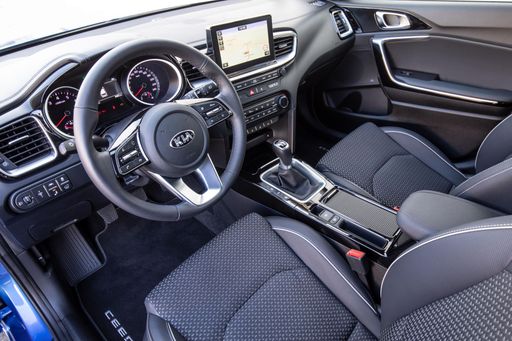Alfa Romeo Junior vs Kia Ceed Sportswagon – Which car suits you better?
Everyday use, family trips or long-distance drives – here’s where the differences show.
Discover whether Alfa Romeo Junior or Kia Ceed Sportswagon fits your lifestyle better.
Costs and Efficiency:
Looking at overall running costs, both models reveal some interesting differences in everyday economy.
Kia Ceed Sportswagon has a slight advantage in terms of price – it starts at 24300 £, while the Alfa Romeo Junior costs 25700 £. That’s a price difference of around 1337 £.
Fuel consumption also shows a difference: Alfa Romeo Junior manages with 4.80 L and is therefore distinct more efficient than the Kia Ceed Sportswagon with 6 L. The difference is about 1.20 L per 100 km.
Engine and Performance:
Power, torque and acceleration say a lot about how a car feels on the road. This is where you see which model delivers more driving dynamics.
When it comes to engine power, the Alfa Romeo Junior has a convincingly edge – offering 280 HP compared to 140 HP. That’s roughly 140 HP more horsepower.
In acceleration from 0 to 100 km/h, the Alfa Romeo Junior is significantly quicker – completing the sprint in 5.90 s, while the Kia Ceed Sportswagon takes 9.70 s. That’s about 3.80 s faster.
In terms of top speed, the Alfa Romeo Junior performs hardly perceptible better – reaching 206 km/h, while the Kia Ceed Sportswagon tops out at 197 km/h. The difference is around 9 km/h.
There’s also a difference in torque: Alfa Romeo Junior pulls distinct stronger with 345 Nm compared to 253 Nm. That’s about 92 Nm difference.
Space and Everyday Use:
Cabin size, boot volume and payload all play a role in everyday practicality. Here, comfort and flexibility make the difference.
Both vehicles offer seating for 5 people.
In curb weight, Kia Ceed Sportswagon is minimal lighter – 1335 kg compared to 1380 kg. The difference is around 45 kg.
In terms of boot space, the Kia Ceed Sportswagon offers noticeable more room – 625 L compared to 415 L. That’s a difference of about 210 L.
In maximum load capacity, the Kia Ceed Sportswagon performs noticeable better – up to 1694 L, which is about 414 L more than the Alfa Romeo Junior.
When it comes to payload, Kia Ceed Sportswagon a bit takes the win – 485 kg compared to 420 kg. That’s a difference of about 65 kg.
Who comes out on top?
Overall, the Alfa Romeo Junior shows itself to be leaves the rival little chance and secures the title of DriveDuel Champion.
It convinces with the more balanced overall package and proves to be the more versatile choice for everyday use.
 @ Alfa Romeo / Stellantis Media
@ Alfa Romeo / Stellantis Media
Alfa Romeo Junior
Alfa Romeo Junior
The Alfa Romeo Junior captures the essence of Italian design with its sleek lines and compact dimensions, making it an icon of elegance and performance. With a spirited driving experience and a charming retro aesthetic, it appeals to enthusiasts and casual drivers alike. This delightful car embodies the brand's rich heritage while remaining a fun and engaging option for those seeking a unique automotive experience.
details @ Alfa Romeo / Stellantis Media
@ Alfa Romeo / Stellantis Media
 @ Alfa Romeo / Stellantis Media
@ Alfa Romeo / Stellantis Media
 @ Alfa Romeo / Stellantis Media
@ Alfa Romeo / Stellantis Media
Kia Ceed Sportswagon
The Kia Ceed Sportswagon is a versatile estate car that combines practicality with a touch of elegance. It offers a spacious interior, making it ideal for families or those with an active lifestyle. The vehicle's sleek design and advanced features make it a strong contender in the competitive estate car market.
details @ Kia Corporation
@ Kia Corporation
 @ Kia Corporation
@ Kia Corporation
 @ Kia Corporation
@ Kia Corporation
 @ Kia Corporation
@ Kia Corporation
 @ Kia Corporation
@ Kia Corporation
 @ Alfa Romeo / Stellantis Media
@ Alfa Romeo / Stellantis Media
|
 @ Kia Corporation
@ Kia Corporation
|
|
|
|
Costs and Consumption |
|
|---|---|
|
Price
25700 - 41600 £
|
Price
24300 - 29100 £
|
|
Consumption L/100km
4.8 - 5.4 L
|
Consumption L/100km
6 - 6.4 L
|
|
Consumption kWh/100km
15.1 - 17.5 kWh
|
Consumption kWh/100km
-
|
|
Electric Range
344 - 410 km
|
Electric Range
-
|
|
Battery Capacity
0.4 - 51 kWh
|
Battery Capacity
-
|
|
co2
0 - 119 g/km
|
co2
137 - 146 g/km
|
|
Fuel tank capacity
44 - 45 L
|
Fuel tank capacity
50 L
|
Dimensions and Body |
|
|---|---|
|
Body Type
SUV
|
Body Type
Estate
|
|
Seats
5
|
Seats
5
|
|
Doors
5
|
Doors
5
|
|
Curb weight
1380 - 1689 kg
|
Curb weight
1335 - 1437 kg
|
|
Trunk capacity
340 - 415 L
|
Trunk capacity
512 - 625 L
|
|
Length
4173 mm
|
Length
4605 mm
|
|
Width
1781 mm
|
Width
1800 mm
|
|
Height
1505 - 1538 mm
|
Height
1422 - 1465 mm
|
|
Max trunk capacity
1205 - 1280 L
|
Max trunk capacity
1545 - 1694 L
|
|
Payload
390 - 420 kg
|
Payload
455 - 485 kg
|
Engine and Performance |
|
|---|---|
|
Engine Type
Electric, Petrol MHEV
|
Engine Type
Petrol, Petrol MHEV
|
|
Transmission
Automatic
|
Transmission
Automatic, Manuel
|
|
Transmission Detail
Dual-Clutch Automatic, Reduction Gearbox
|
Transmission Detail
Dual-Clutch Automatic, Manual Gearbox
|
|
Drive Type
Front-Wheel Drive, All-Wheel Drive
|
Drive Type
Front-Wheel Drive
|
|
Power HP
136 - 280 HP
|
Power HP
100 - 140 HP
|
|
Acceleration 0-100km/h
5.9 - 9.1 s
|
Acceleration 0-100km/h
9.7 - 13.5 s
|
|
Max Speed
150 - 206 km/h
|
Max Speed
178 - 197 km/h
|
|
Torque
230 - 345 Nm
|
Torque
172 - 253 Nm
|
|
Number of Cylinders
3
|
Number of Cylinders
3 - 4
|
|
Power kW
100 - 207 kW
|
Power kW
74 - 103 kW
|
|
Engine capacity
1199 cm3
|
Engine capacity
998 - 1482 cm3
|
General |
|
|---|---|
|
Model Year
2024 - 2025
|
Model Year
2024
|
|
CO2 Efficiency Class
A, C, D
|
CO2 Efficiency Class
E
|
|
Brand
Alfa Romeo
|
Brand
Kia
|
What drive types are available for the Alfa Romeo Junior?
Available configurations include Front-Wheel Drive or All-Wheel Drive.
The prices and data displayed are estimates based on German list prices and may vary by country. This information is not legally binding.
